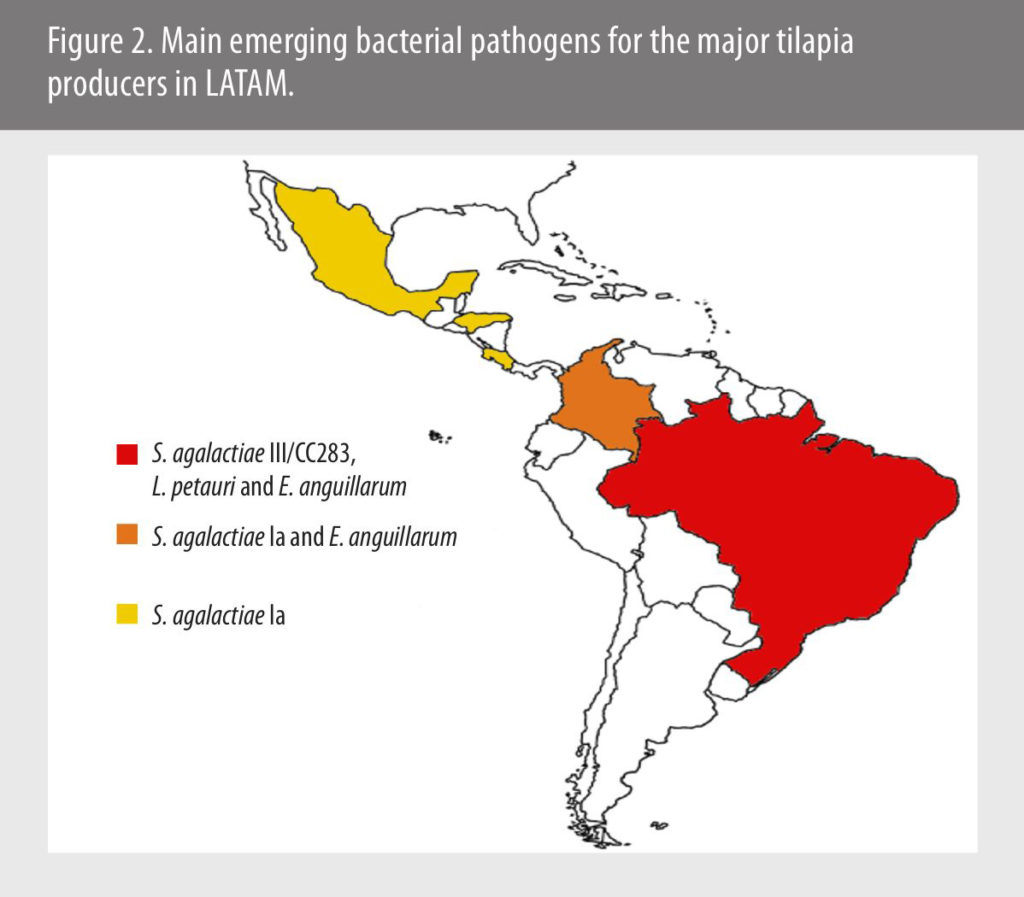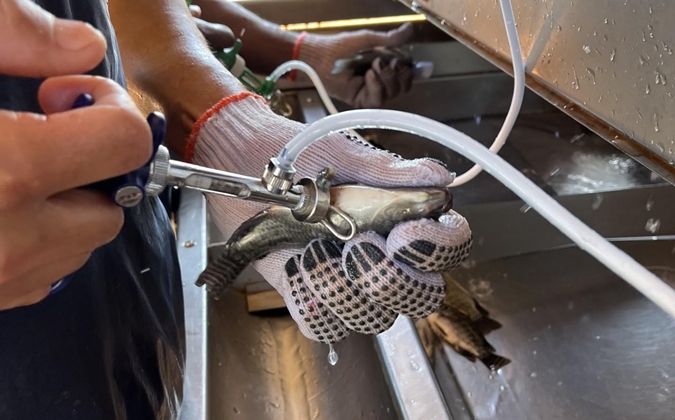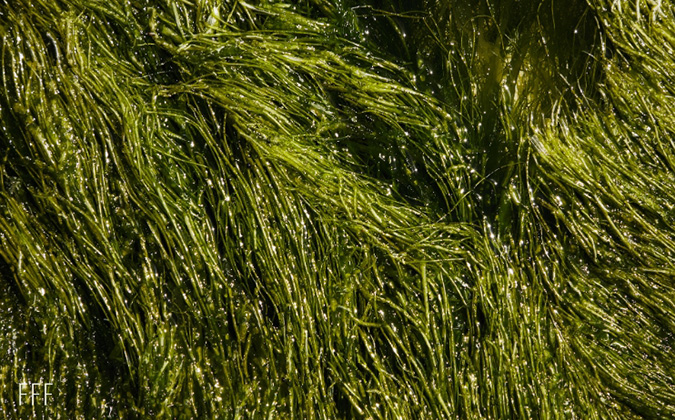
Emerging diseases on Latin America’s tilapia farms
By Carlos AG Leal
Professor of Immunology and Fish Health
Veterinary School, Federal University of Minas Gerais-UFMG, Brazil
Tilapia production in Latin America (LATAM) has grown significantly in the last decade. This growth has been driven by the expansion and intensification of production, targeting local and export markets — mainly the US — as an alternative to Asian suppliers.
In the past, the most common health problems faced by producers and companies in the region were parasitic (i.e., infestation by Trichodina sp.) and bacterial diseases (mainly infection by Flavobacterium columnare) in young stages and streptococcosis in finfish. However, this scenario has changed drastically in the last decade with the emergence of viral, bacterial and fungal diseases across the region.
Viral diseases are late arrivals to region
Until the first decade of the 20th century, tilapia farming, unlike other fish production, did not experience significant problems with viral diseases. However, from 2014 onward, different viral diseases have emerged in the world and impacted tilapia production in LATAM.
The tilapia lake virus (TiLV; Tilapinevirus tilapiae) was the first viral disease to have an effect in the region. It was first described in 2014, being officially reported in Peru, Mexico and Colombia in the years 2017, 2018 and 2020, respectively.1
In addition to those reports, research published in 20142 described an outbreak in farmed tilapia in Ecuador. The main pathology observed in diseased fish was a form of hepatitis, and its association with TiLV was later confirmed.3 In LATAM, mortalities of 30% to 90% of the batches affected by TiLV have been described, causing a great impact mainly on fingerlings and juveniles.
A second viral disease that has emerged and had a significant impact on LATAM is infectious spleen and kidney necrosis virus (ISKNV). This pathogen was first associated with tilapia infection in Thailand in 2015.4 In LATAM, the virus was first associated with an outbreak in Brazil in 2020.5
Subsequently, a retrospective study carried out by the National Laboratory for Livestock Diseases of the Brazilian Ministry of Agriculture, Livestock and Food Supply showed that the virus had been circulating in tilapia production in the country since 2017,6 which explains the widespread and endemic status of the disease in the country.
According to OIE, when ISKNV is associated with disease in tilapia, it is only voluntary, not mandatory, for countries to notify its occurrence as an emerging disease. Thus, currently in the World Animal Health Information System, only cases from Brazil were notified as part of local, federal government aquatic-animal programs. However, from communications with companies and technicians, there are suspected cases in Central America.
In Brazil, where most cases of ISKNV are concentrated in the region, disease outbreaks have mainly occurred in fingerlings and juveniles, at temperatures of 26° C to 30° C. Mortalities can reach up to 60% when associated with other risk factors such as bacterial coinfections and water-quality problems.
Streptococcosis poses main bacterial threat
Streptococcosis is the group of bacterial diseases that most affects tilapia farming worldwide. In LATAM countries, the pathogens Streptococcus agalactiae serotype Ib and Streptococcus iniae are endemic and were the most important until recently. Today, new strains of Streptococcus and Gram-positive coccus species have emerged in different countries and have had a significant impact.
The first on this list is S. agalactiae of serotype III clonal complex 283. This was reported in Brazil from 2016 onward, associated with outbreaks in tilapia farms with mortalities of up to 80% of the batches.7 In addition to being highly virulent for tilapia, this strain is zoonotic and can cause infections in humans,8 increasing both the risk to consumers and the impact on the tilapia market.
In 2019, outbreaks caused by S. agalactiae serotype Ia began to be identified. This strain has caused outbreaks with mortality of up to 60% in vaccinated batches and up to 85% in unvaccinated, specifically in hot periods of the year when the water temperature is over 32° C.
In addition to the direct impact, two other problems have been associated with this bacterium: a high rate of carcass lesions in affected populations, causing discard rates of up to 15% of animals at slaughter, and low vaccine performance against virulent strains. This means that resources for the prevention of disease have been limited.
This pathogen has had a high impact in countries such as Mexico, Honduras and Costa Rica. This lineage was also recently identified in Colombia and previously in Brazil. However, in these two countries the impact observed in Central America has not been repeated.
A third streptococcosis-causing pathogen that has emerged in LATAM is Lactococcus petauri (previously classified as L. garvieae). In 2021, this pathogen was found in a tilapia-producing region in the northeast of Brazil, causing mortalities in 15% to-65% of the batches. The strains circulating in the country are very virulent and well adapted to tilapia, representing a new challenge for what is the main producer in the region.
Finally, outbreaks caused by Edwardsiella anguillarum (a Gram-negative bacterium) has been reported frequently in Colombia and Brazil. In the latter country, the disease has had a significant impact on fingerlings and juveniles and has been very commonly associated with cases of coinfection with ISKNV, enhancing its impact. Meanwhile, Francisella orientalis is another emerging bacterial pathogen with a growing impact.9
No treatment options for fungal disease
Historically, the main fungal diseases observed in tilapia farming in LATAM have been cutaneous mycoses caused by oomycetes, mainly of the genus Saprolegnia. These usually occur in winter, in young animals and after handling.
However, since 2019, more serious cases associated with infection by Branchiomyces spp. have been observed in Brazil. This pathogen has caused outbreaks with high mortality (up to 85% in the most severe cases), mainly in fingerlings and juveniles. This fungus causes infection and necrosis of the gill tissue, and so far, there are no specific drugs for the treatment of the disease.
Final considerations
Based on the history of disease occurrence among the main tilapia producers in LATAM, we have seen the emergence of a new disease every 2 to 3 years.
With this in mind, biosecurity measures for disease surveillance, prevention and control in local tilapia farming are essential to prevent the introduction of new diseases and improve efforts to eradicate those that currently impact the region.
1 World Animal Health Information System of World Organization of Animal Health (OIE-WAHIS).
2 Ferguson HW, Kabuusu R., Beltran S., Reyes E, Lince JA, del Pozo J. Syncytial hepatitis of farmed tilapia, Oreochromis niloticus (L.): a case report. J Fish Dis. 2014;37:583-589. https://doi.org/10.1111/jfd.12142
3 del Pozo J, Mishra N, Kabuusu R, Cheetham S, Eldar A, Bacharach E, Lipkin WI, Ferguson, HW. Syncytial hepatitis of tilapia ( Oreochromis niloti – cus L.) is associated with orthomyxovirus-like virions in hepatocytes. Vet Pathol. 2017;54:164-170. https://doi.org/10.1177/0300985816658100
4 Dong HT, Nguyen VV, Le HD, Sangsuriya P, Jitrakorn S, Saksmerprome V, Senapin S, Rodkhum C. Naturally concurrent infections of bacterial and viral pathogens in disease outbreaks in cultured Nile tilapia (Oreochromis niloticus) farms. Aquaculture. 2015;448:427-435. https://doi.org/10.1016/j.aquaculture.2015.06.027
5 Figueiredo HCP, Tavares GC, Dorella FA, Rosa JCC, Marcelino SAC, Pierezan F, Pereira FL. First report of infectious spleen and kidney necrosis virus in Nile tilapia in Brazil. Transbound Emerg Dis. 2021 Jul. https://doi.org/10.1111/tbed.14217
6 Fonseca Jr AA, Laguardia-Nascimento M, Ferreira APS, Pinto CA, Freitas TRP, Rivetti Jr AV, Man VSF, Camargos MF. Detection of megalocytivirus in Oreochromis niloticus and Pseudoplatystoma corruscans in Brazil. Dis Aquat Organ. 2022;149:25-32. https://doi.org/10.3354/dao03657
7 Leal CA, Queiroz GA, Pereira FL, Tavares GC, Figueiredo HC. Streptococcus agalactiae sequence type 283 in farmed fish, brazil. Emerg Infect Dis. 2019;25(4):776.
8 FAO. Risk Profile Group B Streptococcus (GBS) Streptococcus agalactiae sequence type (ST) 283 in freshwater fish. 2021. 10.4060/cb5067en.
9 Leal C, Tavares GC, Figueiredo H. Outbreaks and genetic diversity of Francisella noatunensis subsp orientalis isolated from farm-raised Nile tilapia (Oreochromis niloticus) in Brazil. Genetics and Molecular Research 2014;13(3):5704-12.
Posted on: November 09, 2022








